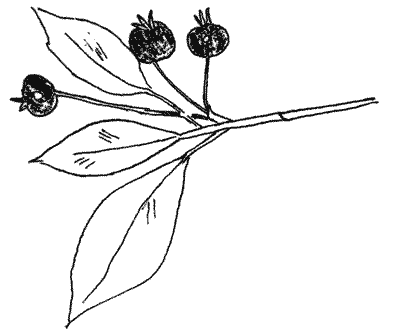
THE GRUMICHAMA
A Tropical Cherry
SCIENTIFIC NAME: Eugenia dombeyi or E. brasiliensis
FAMILY: Myrtaceae
 One of the most attractive trees to grow in your garden is the Grumichama.
Landscaping with trees from which you can eat the fruit is a rewarding pastime. The Grumichama should have a place in your tropical garden.
One of the most attractive trees to grow in your garden is the Grumichama.
Landscaping with trees from which you can eat the fruit is a rewarding pastime. The Grumichama should have a place in your tropical garden.
The leaves of the Grumichama are a beautiful leathery, glossy, green, 7 to 10cm long, 2 to 5 cm wide, and when new growth appears, it has reddish young leaves.
At the height of about 75cm and only 2½ years old, you can expect the Grumichama to flower around July - August. A beautiful display of attractive small, white flowers covers the tree. The flowers have no perfume, but the bees are attracted to the pollen-laden stamens. Fruit development and maturity takes only 5 weeks. The fruit hang on long stems in small clusters, changing from green to red, and then to a dark purplish-black. The flesh is whitish with flecks of red, and the size of the fruit is about 3cm in diameter, with 3 tiny petals protruding on the bottom of the fruit.
I have found that the best way to eat the Grumichama is to wait until it is purplish-black, and taking hold of the three petals, squeeze the flesh into the mouth. The skin can be eaten as well. The flavour is much like a cherry, melting and sweet. The fruit will keep up to 3 days if picked when purplish-black, or longer if picked in the red stage and left to ripen.
The fruit usually has only one seed, but germination is easy, taking from 4 to 6 weeks. An acid, rich, moist soil is very favourable for the Grumichama, but it will grow in other soil types with mulching and proper care. Nutritional sprays and organic fertilizers benefit the tree enormously. This tree is a must for one's garden.
DATE: November 1981
* * * * * * * * * * * * *
